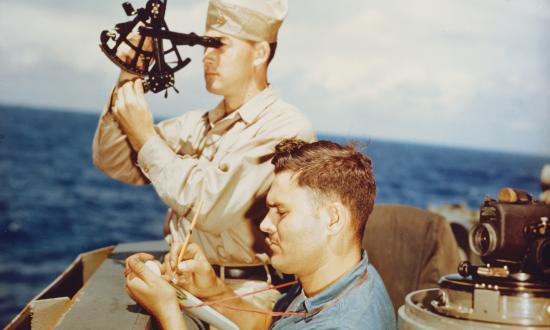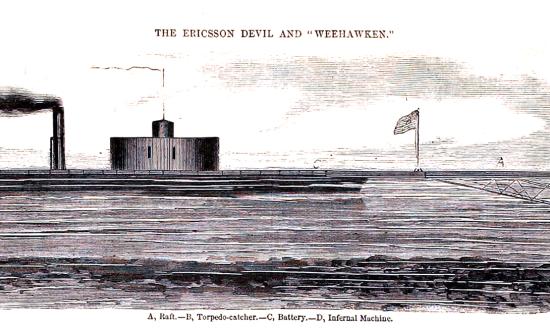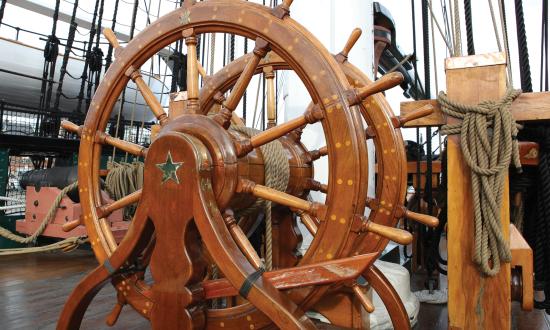Almost as soon as submarines became serious weapons of war, aircraft became their nemesis. Beginning in World War I, British and U.S. airplanes and blimps attacked German U-boats operating on the surface, where submarines normally sailed—at least until the advent of nuclear propulsion in the 1950s. Prior to that, submarines typically submerged only to evade or attack an enemy.
Consequently, submarines often were fitted with antiaircraft guns. For example, U.S. submarines in World War II were armed with 20-mm Oerlikon and 40-mm Bofors “wet mount” guns to fight off aircraft while surfaced. Even some recent nuclear-powered submarines have to operate at or near the surface to carry out some missions (such as attacking ships and launching missiles), making them more vulnerable to possible aircraft detection and attack.
Could a submerged submarine engage an aircraft? In the 1960s, several countries began developing subsurface-to-air missiles that could be launched from the near-surface against low-flying aircraft, especially helicopters. Britain, Israel, and the Soviet Union put these weapons at sea on a limited basis. But those systems required the submarine to be on the surface—or to at least broach its sail—to launch the missiles.
As recently as the early 2000s, the U.S. Navy conducted experiments to develop a submarine-launched version of the AIM-9 Sidewinder air-to-air missile, in a project dubbed “Subwinder.” On 19 November 2005, an AIM-9X missile was vertically launched from a stationary, land-based test platform. The heat-seeking missile successfully acquired and destroyed the slow-moving QH-50 DASH target drone with a direct hit. (The DASH was an antisubmarine helicopter drone, originally designated DSN; it was changed to QH-50 in 1962 as part of the standardization of U.S. military aircraft designations. See “The Unmanned Helicopter,” December 1999, pp. 10–11.)
The missile specification called for the weapon to be encased in a launch capsule that would be ejected from a submarine operating at periscope depth. When the capsule broached the surface, the missile would launch, acquire the target, and engage it. But the missile project was not pursued.
Before Subwinder, in the late 1970s, the United States began development of the Submarine Air-Defense System, also known as the Self-Initiating Antiaircraft Missile (SIAM), sponsored by the Defense Advanced Research Projects Agency (DARPA). SIAM was intended to be launched from a completely submerged submarine.
The initial detection of fixed-wing aircraft and helicopters was to be accomplished with the standard submarine-towed acoustic arrays. Once launched, the missile would use its onboard dual-mode radar/infrared guidance system to acquire a target autonomously. In 1979, DARPA contracted with the Ford Aerospace Corporation to demonstrate the SIAM concept’s feasibility.
The first flight test of a technology demonstration missile—designated DTV-4—occurred in April 1980, at the White Sands Missile Range in New Mexico. The missile was ground-launched against a remote-controlled QH-50 DASH helicopter equipped with flares, which could be dropped from racks extending from the fuselage to distract the missile. The helicopter was hovering at 1,500 feet during the tests.
The missile’s booster rocket ejected it from the launch tube to an altitude of about 500 feet, at which point the missile spun to search an entire hemisphere for a target. When the radar acquired the drone, the spinning stopped, and the missile’s main rocket motor ignited to propel it toward the target. As it neared the helicopter, its guidance shifted from radar to terminal-homing infrared to perform the final maneuvers. The missile lacked a live warhead and fuze, but it was stated that the target would have been destroyed had they been included. Reports say that in subsequent tests the drone was destroyed.
Despite the success of the SIAM trials, the Navy did not pursue the project. Some sources contend that it was disregarded for financial reasons, while others assert that submariners did not want to have any weapon that required them to remain near the surface when an aircraft was detected. However good the antiair missile, the advantage lay with the aircraft.









